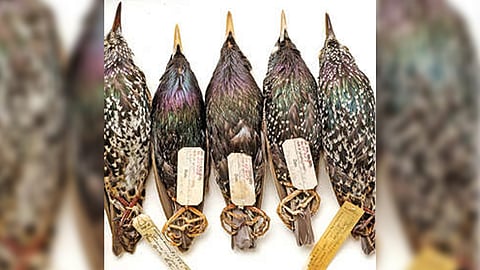

• JASON BITTEL
CHENNAI: On Oct. 4, 1960, a Lockheed L-188 Electra airplane nose-dived into Boston Harbor just seconds after takeoff. Out of 72 crew members and passengers, only 10 survived. As investigators sorted through the rubble, they kept finding globs of what appeared to be black feathers. Such material eventually came to be known as snarge. Best investigators could surmise, the Electra’s engines had ingested a flock of birds, but no one could say what sort of bird could bring down an airplane of that size. So the investigators called Roxie Laybourne, an ornithologist at the Smithsonian Institution who was an expert on feathers.
With a vast collection of museum specimens at her disposal, Laybourne compared microscopic patterns in the feathers. What wrecked the Electra had not belonged to a large-bodied bird, like a vulture, turkey or crow. Rather, the feathers were from the diminutive European starling. In the decades after, airports would hire wildlife biologists to take the information Laybourne provided and use it to discourage certain bird species from flocking around their flight paths. In turn, Laybourne would become a science and air-traffic safety legend known as the Feather Lady. You’d be just as warranted in calling her the Queen of Snarge.
Carla Dove, program manager for the Smithsonian Institution’s Feather Identification Lab and Laybourne’s successor, said she wasn’t sure who first coined the term snarge, but that she first heard it at the museum. Snarge can be a wad of a Canada goose lodged inside an airplane engine. Or it can be a broken and burned gull feather littered along the runway. Snarge can even be as small as a rusty-red smear on the nose of an airliner.
But no matter what form it takes, every bit of snarge is different — and all snarge is important. Back in Laybourne’s day, physical comparison of snarge specimens beneath a microscope was the industry standard. “She cleaned up the feathers and washed them, and then matched the pattern, the colors and the texture to the museum specimens,” Dr. Dove said.
Dr. Dove and her colleagues now also use DNA analysis because a snarge sample may not always include a recognizable piece of feather. In some cases, samples may be too small or degraded to yield DNA, so they solve the mystery with a combination of techniques. And determining the origin of snarge has real-world consequences. After starlings were implicated in the Electra crash, which remains the deadliest ever caused by a bird strike, the airline industry started making engines with those collisions in mind. Many plane models can now be expected to survive a hit from a bird up to eight pounds.
But even these technological advances don’t mean that an aircraft is invulnerable to a bird strike, as Chesley B. Sullenberger III and his passengers learned in 2009 when Canada geese brought down their Airbus A320 in the event now known as the Miracle on the Hudson. Of course, even small animals can make a deadly impact. Since the 1960s, the Feather Identification Lab has worked with the Federal Aviation Administration and wildlife biologists at every major airport to identify problem birds and discourage them from hanging out nearby. Management options include capturing and relocating some birds or scaring off others with trained falcons, noise cannons and distress calls. On rare occasions, they turn to lethal measures.
Other strategies include eliminating standing water, removing garbage or food scraps and putting nets over roosting areas.
Jason Bittel is a journalist with NYT©2022
The New York Times
Visit news.dtnext.in to explore our interactive epaper!
Download the DT Next app for more exciting features!
Click here for iOS
Click here for Android